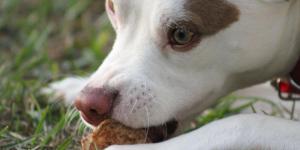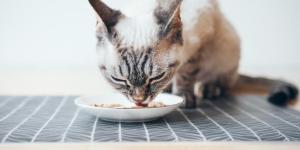My Cat Is Hungry But Won't Eat

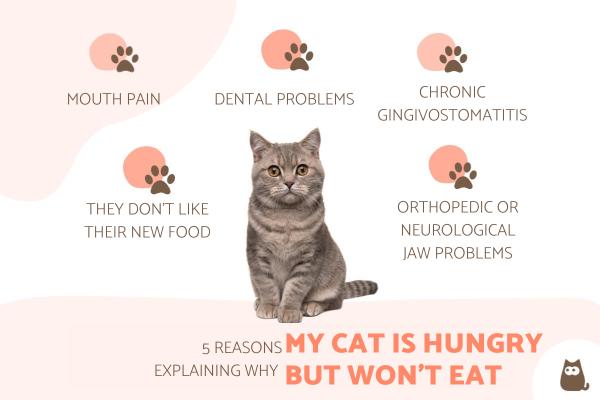

See files for Cats
If your cat keeps meowing at you near their food dish, it should be a clear sign they want to eat. This is why a cat not eating when you feed them can be so confusing. While a psychological cause may be at fault, it is more likely to be a physiological issue which means the cat is refusing food. This type of anorexia will have serious repercussions if it is not addressed quickly. A lack of food for any prolonged period of time will lead them to becoming weaker and unable to fend off secondary health problems. Eventually, it will cause the cat's organism to shut down.
At AnimalWised, we discover the possible reasons why my cat is hungry but won't eat. We look at issues with their oral cavity, dental problems, gastrointestinal disorders and even whether the problem is simply down to your cat being a picky eater.
1. Oral pain
When a cat is hungry, they won't be shy letting you know about it. Many feline guardians will experience a cat waking them up first thing in the morning demanding food. If we so much as rustle a food packet, they can come running as if they hadn't eaten in weeks. This is why refusing food when they show signs of hunger is a worry.
It is possible a cat is hungry, but physically cannot eat. This is the case if they have a sore mouth and their food is hard kibble. Wet food is easier to ingest, but even this can be problematic with some oral health issues. If your cat is hungry, but rejecting food, it could be due to one of the following oral health problems:
- Periodontal disease: this is the inflammation or infection of the gums and teeth. It is caused by the buildup of plaque that turns into tartar, resulting in gingivitis. This inflammation can lead to tooth loss and severe pain, making chewing difficult and painful.
- Stomatitis: the chronic inflammation of the gums and other areas of the mouth, usually a consequence of an altered immune response. This also causes a lot of pain and discomfort, but it can be more widespread.
- Oral injuries or wounds: these can arise from fights, falls, accidents or the ingestion of sharp objects, causing significant pain. Once you have addressed their mouth problem, you may want to learn how long it takes for two cats to get along.
- Dental abscesses: these are accumulations of pus caused by dental infections that are extremely painful.
- Oral tumors: these can be benign or malignant, but either can make eating difficult or even painful. Cancerous tumors will also put the cat's life at risk.
Treatment or oral problems in cats
Treatment for oral pain is based on addressing the underlying cause of the problem. If the problem is due to inflammatory processes, anti-inflammatory drugs in combination with analgesics may be used. Antibiotics can be used to treat bacterial infections, especially if they have resulted in an abscess.
Learn more about treating severe infections with our article asking can a cat die from an abscess?
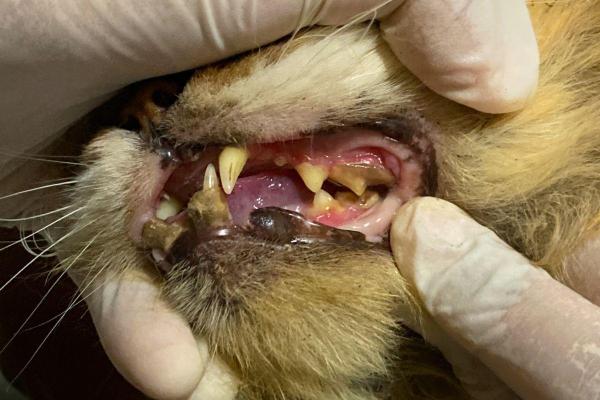
2. Dental problems
We have already mentioned some oral health issues related to gums and teeth, but it is helpful to look at the dentition more specifically. When a cat's teeth are affected by infections or fractures, it can make eating difficult. This is particularly the case with hard kibble which needs to be broken down to be swallowed. You may see your cat starts to eat, but gives up due to the discomfort. This doesn't mean they aren't still hungry.
Trauma is a common cause of tooth fracture in cats. If their teeth are already weakened, they can break a tooth chewing on something hard such as a cat toy. This can expose the nerves within the teeth which can cause great pain.
Another dental problem that can cause a cat pain when chewing is malocclusion. This occurs when the teeth don't align properly. This is more common in cats with overlapping teeth or those who have suffered a jaw injury. You may have even seen the cat tries to eat without chewing to compensate for the discomfort.
Treatment of dental problems in cats
If your cat is begging for food but won't eat because of a dental problem, treatment depends on the specific cause:
- Fractures: the tooth may be extracted to prevent further pain or infection. Alternatively, the affected teeth may be sealed or dental polish may be applied to protect them. Painkillers and/or antibiotics may be used to control pain and prevent infection.
- Dental malocclusion: if the problem is severe, it may require tooth extractions or even surgery to correct the alignment and improve the cat's quality of life.
Losing teeth is a problem for adult cats, but you can learn when cats lose their baby teeth with our related guide.
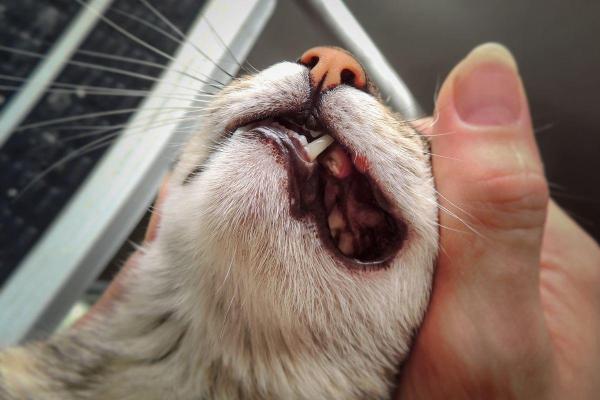
3. Chronic feline gingivostomatitis
Chronic feline gingivostomatitis is another condition that can cause a cat to be hungry but not eat. This disease is characterized by diffuse inflammation of the cat's mouth, affecting both the gums and the oral mucosa. It will need to have been present for at least six months to be considered chronic.
Gingivostomatitis can vary in severity. One of its most common lesions is caudal stomatitis, an inflammation in the deepest part of a cat's mouth. This inflammation can extend to the tongue and be proliferative in some cases, causing excessive growth of inflamed tissue. In addition to the pain that causes anorexia in the cat, affected felines may present the following symptoms:
- Trouble swallowing
- Lack of grooming due to oral pain
- Halitosis (bad breath)
- Oral bleeding
- Ptyalism (excessive salivation)
Causes of this disease include feline calicivirus, feline retroviruses (such as feline leukemia virus or feline immunodeficiency virus) or stress, but it it primarily has an immune-mediated cause. The latter is due to an exaggerated reaction of the cat's immune system, with an alteration of local immunity in its saliva.
Treatment of gingivostomatitis in cats
If you have a cat with chronic feline gingivostomatitis, you should know that it is a difficult disease to treat. The goal of treatment is to reduce plaque buildup and control inflammation. This may require analgesics such as buprenorphine or NSAIDs like meloxicam for cats to reduce pain and inflammation. Antibiotics, regular oral cleanings and tooth extractions are also often used.
For cases that are either very severe or do not respond to treatment, complete extraction of the molars and premolars may be necessary. Although it is a radical procedure, it is considered the most effective therapy, curing up to 60% of affected cats. The remaining cats may not be completely cured, but experience a significant reduction in pain and inflammation, allowing them to eat more comfortably.
Discover more detail about the causes, symptoms and treatment of gingivostomatitis in cats.
4. Orthopedic or neurological disorders of the jaw
A cat not eating when they are hungry may also be caused by pain and chewing dysfunction as a result of some type of neurological or orthopedic disorder in the jaw. Some of these problems may include:
- Jaw dislocation: this occurs when the jaw moves out of place at the temporomandibular joint (TMJ), causing severe pain and difficulty opening or closing the mouth.
- Mandibular fractures: are usually the result of trauma to the mouth or face. The growth of jaw tumors may also weaken the bone. A common oral tumor in felines is a squamous cell tumor in the cat's mouth.
- Temporomandibular joint dysfunction: causes problems moving the jaw and pain when chewing. It can result from arthritis, trauma or genetic conditions that affect this joint.
- Neurological disorders of the jaw: these can arise when the nerves that control the masticatory muscles are affected, as a result of tumors, motor neuropathies or infections.
- Mandibular osteomyelitis: this is an infection of the jawbone that can cause severe pain, swelling and difficulty chewing.
Treatment of jaw disorders in cats
Treatment depends on the specific problem:
- Mandibular dislocations: require repositioning of the mandible and analgesia to control pain.
- Mandibular fractures: require surgical repair to stabilize the bone.
- Temporomandibular joint dysfunction: managed with nonsteroidal anti-inflammatory drugs (NSAIDs) to reduce pain and inflammation.
- Neurological disorders: treatment depends on the underlying cause of the neurological damage.
- Osteomyelitis of the jaw: is treated primarily with antibiotics to fight the infection and, in some cases, surgery to drain abscesses or remove infected tissue.
Learn more about an antibiotic commonly prescribed in veterinary medicine with our article on uses, dosage and side effects of doxycycline for cats.
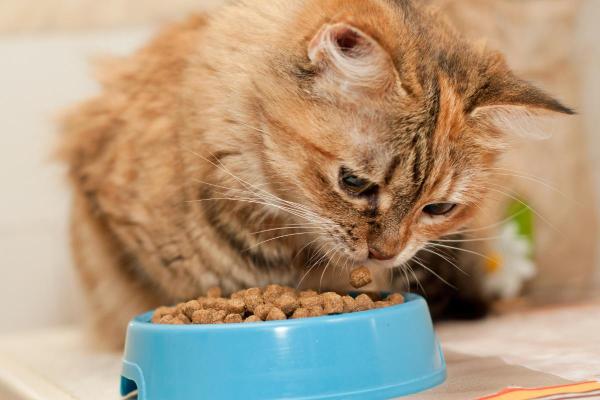
5. Change of food
In many of the above reasons why a cat is hungry but not eating their food, this behavior is accompanied by other signs. These may include bleeding from the mouth or signs of pain in the cat. Sometimes, the cat may refuse to eat, but otherwise appears completely healthy. If this is the case, we need to look at possible environmental factors.
If you have recently changed your cat's food, this is likely the reason they refuse to eat it. Cats can be very picky eaters. They have a preference for a certain brand or type of food. The reasons why are difficult to determine. It could be there is something in the composition of the new food which they don't like or even causes them some gastric upset. In many cases, it is simply a preference.
Cats often need a period of adaptation to accept a new food, so it's important to introduce it gradually to avoid rejection. A sudden change in diet can cause stress in our felines, causing them to refuse to try the new food, even if they are hungry.
This sometimes occurs when caregivers are vegetarian or vegan and want their cat to follow the same diet. Unfortunately, this is completely inappropriate for the species. Cats are obligate carnivores and require animal protein to survive. In these cases, cats often reject vegetables and prefer foods rich in animal protein, which is essential for their health.
Even a simple change from one type of food to another can cause this rejection. It's always advisable to make the transition gradually to avoid nutritional problems and stress in your cat.
Discover more background information about what cats eat with our feline nutrition guide.

If you want to read similar articles to My Cat Is Hungry But Won't Eat, we recommend you visit our Diet problems category.


